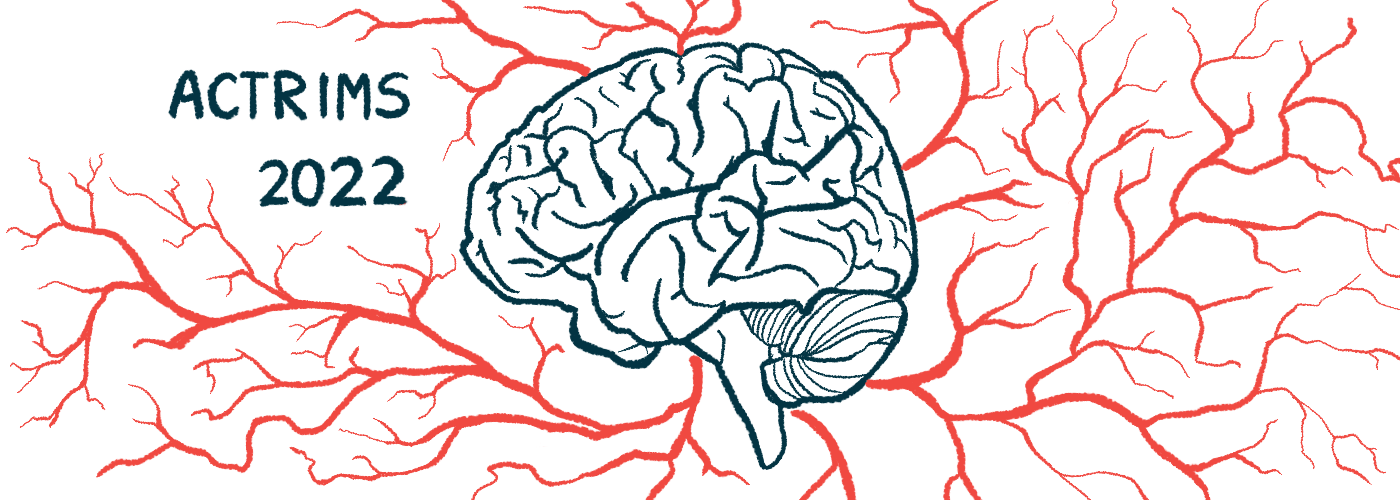#ACTRIMS2022 – Paramagnetic Rim Lesions ‘Highly Specific’ Markers of MS
Written by |

Paramagnetic rim lesions, a specific form of inflammatory damage to the brain, are rarely found in people with disorders other than multiple sclerosis (MS), according to a study in adults with suspected MS.
Its findings suggest that looking at PRLs could be useful for diagnosing the disease.
Brain Renner, MD, a researcher with Cedars-Sinai in Los Angeles, shared these data at the Americas Committee for Treatment and Research in Multiple Sclerosis (ACTRIMS) Forum 2022 in the presentation, “Diagnostic potential of paramagnetic rim lesions for MS in a multicenter setting.”
In MS, the immune system launches an inflammatory attack that damages myelin — a fatty substance that wraps around nerve fibers and helps them send electric signals — ultimately resulting in demyelination or the loss of myelin.
A paramagnetic rim lesion, or PRL, is a spot of chronic, inflammatory demyelination in the brain. PRLs are defined by a central core of pronounced demyelination, surrounded by a “rim” of iron-laden immune cells (microglia and macrophages), which has a characteristic appearance on MRI brain scans. The prognostic and diagnostic utility of PRLs is a subject of ongoing research, but remains incompletely understood.
Researchers examined the prevalence and diagnostic performance of PRLs in 95 people who were being evaluated for a possible MS diagnosis.
These individuals were enrolled at one of 10 North American Imaging in MS Cooperative (NAIMS) sites from 2018 to 2020, and MRI scans were taken to assess for PRLs.
About three-quarters of them were female, with an average age of around 45, and their disability scores were generally low. Of these people, 44 met the diagnostic criteria for MS. The rest either were diagnosed with precursor forms of MS, called clinically isolated syndrome (CIS) and radiologically isolated syndrome (RIS), or with other disorders.
Just under half of the study’s participants (41 out of 95) had at least one PRL. Among the 44 people given an MS diagnosis, 35 (80%) had one or more PRLs. By comparison, only six of the 51 individuals without MS (12%) had PRLs.
One of these six individuals had CIS — basically considered a first instance of MS-like disease — and three were diagnosed with RIS, referring to MS-like brain damage in the absence of disease symptoms. One other patient had an inflammatory brain condition related to viral infection, and the remaining person an unspecified inflammatory brain disease.
Researchers then calculated the sensitivity and specificity of diagnosing MS based on PRLs — sensitivity is a test’s ability to accurately detect patients who have a condition, while specificity is its ability to identify patients who do not have that condition. The sensitivity for PRL-based MS diagnosis was 80%, and the specificity was 88%. The overall accuracy was 84%.
“We had a high sensitivity, high specificity, and high accuracy,” Renner said.
When the CIS and RIS patients were grouped with those given an MS diagnosis, 95% of non-MS patients had no PRLs. Recalculating sensitivity and specificity based on this grouping, PRL-based diagnosis yielded a sensitivity of 67%, specificity of 95%, and accuracy of 78%.
“We showed an increase in specificity … however, we did see a drop in sensitivity [and] accuracy,” Renner said.
Overall, Renner concluded that PRLs are “highly specific for MS” and occur early in the disease course, as evidenced by their presence in people with a suspected MS diagnosis.
In future investigations, the researchers plan to assess how demographic and clinical characteristics vary with the presence and number of PRLs among MS patients. They also plan to do analyses combining PRLs with other diagnostic markers.
Editor’s note: The Multiple Sclerosis News Today team is providing in-depth coverage of the ACTRIMS Forum 2022 Feb. 24–26. Go here to see the latest stories from the conference.






